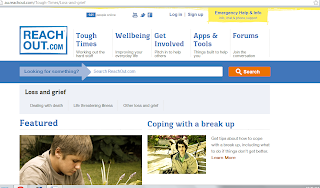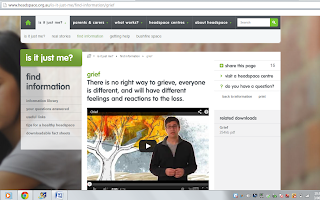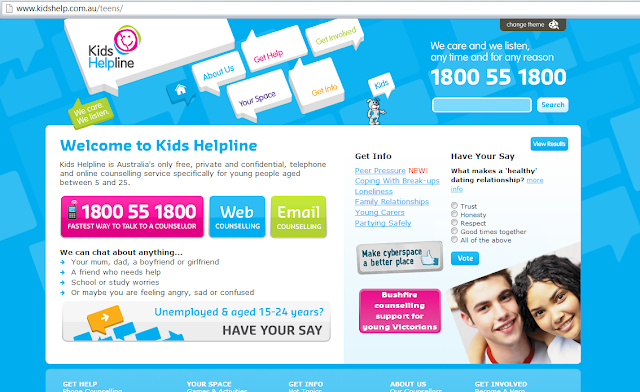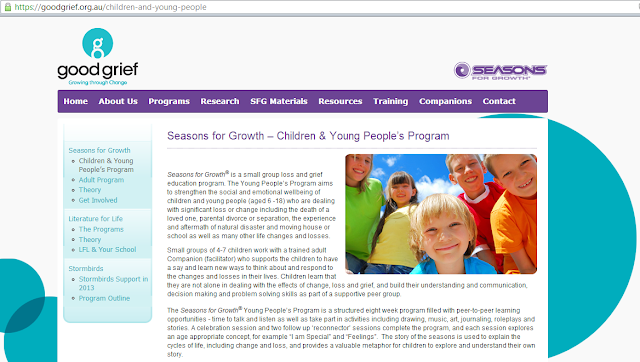1. Reach-out. com
This support service scored the highest using the DISERN model to identify effective support services. This great website provides young people with an easily accessible tool for moving through rough time in their life such as grief and loss. It provides clear aims in offering services such as emergency help lines and counselling for young people who are suffering with grief. A unique characteristic of this site is the real life stories provided by other young people this provides an authentic and supportive view for other young people to relate to with their own issues. A great support service for all young people.
2. Headspace Website
This website is relevant for young people aged 12-25. It provides support through current information on how to manage grief and professional health services provided to these young people. It also scored very highly on allowing young people to contact other services that may help such as kids helpline and life line.
3. Kids Help Line Website/Phone Number
This support service allows young people to contact a qualified counsellor 24 hours 7 days a week. Furthermore this service offers web and email counselling. The website is easy navigate and provides relevant information for any young person going through a difficult time in their life.
4. The National Centre For Childhood Grief Website
This website offers children and young people free counselling and support during an grieving time in a persons life. The site is user friendly and allows for young people to easily navigate through the site. This website scored a majority of threes through the DISERN MODEL.
5. Life Line Website
This website provides crisis support for any person in need of help or counselling services. This website allows for free online chat and a phone line to contact if needed. This resource also focuses on suicide prevention. This resource was reliable and a 24 hour service which made it accessible for all young people.











